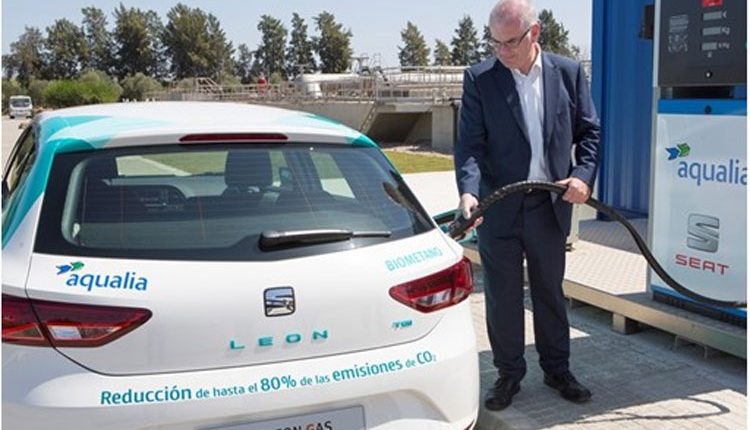Sustainable fuel for cars from wastewater
Turning wastewater into sustainable fuel is the answer to two environmental challenges, namely reusing an increasingly scarce resource, water, and finding alternative energies to counter episodes of severe pollution that impose traffic restrictions in cities such as Madrid and Paris.
The production and consumption of this new biofuel, created through the partnership between Aqualia and SEAT, reduces CO2 emissions by 80% compared to petrol powered vehicles. Just days before World Water Day is celebrated on 22nd March, below are some facts and figures about this innovative biofuel.
How to turn wastewater into biomethane:
In the treatment plants, a physical decanting process in tanks separates the water from the sludge, which is then converted into gas following a fermentation treatment. After a process of purification and enrichment, the biogas is ready to be used as fuel.
Circle the globe 100 times per year:
A car can drive nearly five million kilometres with the biofuel obtained from the water used by 50,000 inhabitants and treated in a year in a mid-sized treatment plant. In other words, it could circle the globe 100 times or make six return trips to the Moon.
More than 1.5 million Olympic sized swimming pools:
Every year around 4,000 cubic hectometres of wastewater is treated in Spain, the equivalent volume of more than 1.5 million Olympic sized swimming pools.
150 cars per day:
Every day, a medium sized plant can treat around 10,000 cubic metres of water and generate 1,000 cubic metres of biomethane, enough for more than 150 vehicles to drive 100km per day.
CNG powered vehicles, an alternative to traffic restrictions:
This renewable biofuel can be used to power compressed natural gas (CNG) cars, thereby reducing emissions by 80% compared to a petrol vehicle, when considering fuel production and vehicle consumption. In addition, CNG models such as SEAT León TGI, SEAT León ST TGI, SEAT León ST and SEAT Mii Ecofuel, are not subject to the traffic restrictions recently put into place since December in several European cities such as Madrid or Paris to curb episodes of severe atmospheric pollution.


Comments are closed, but trackbacks and pingbacks are open.